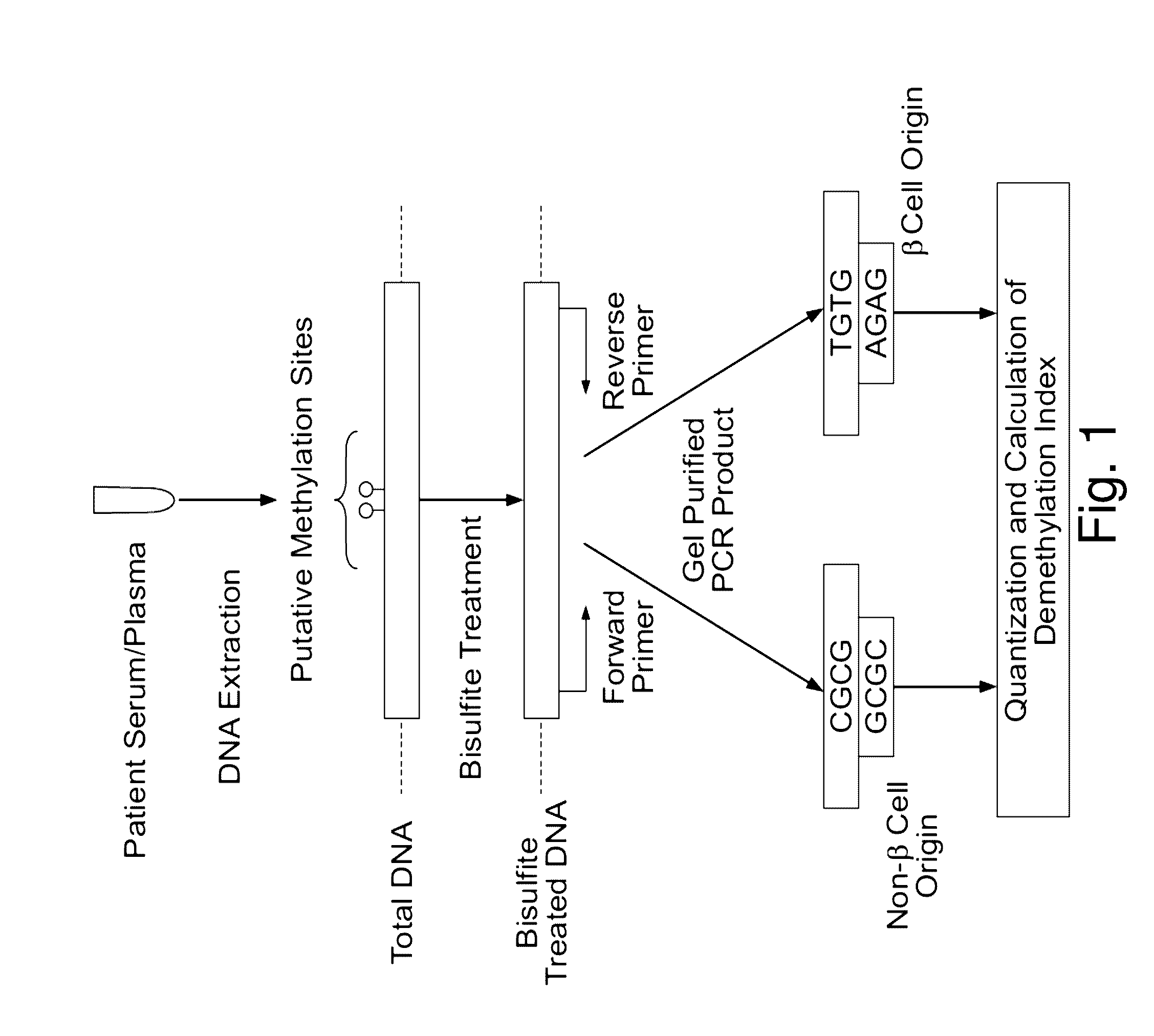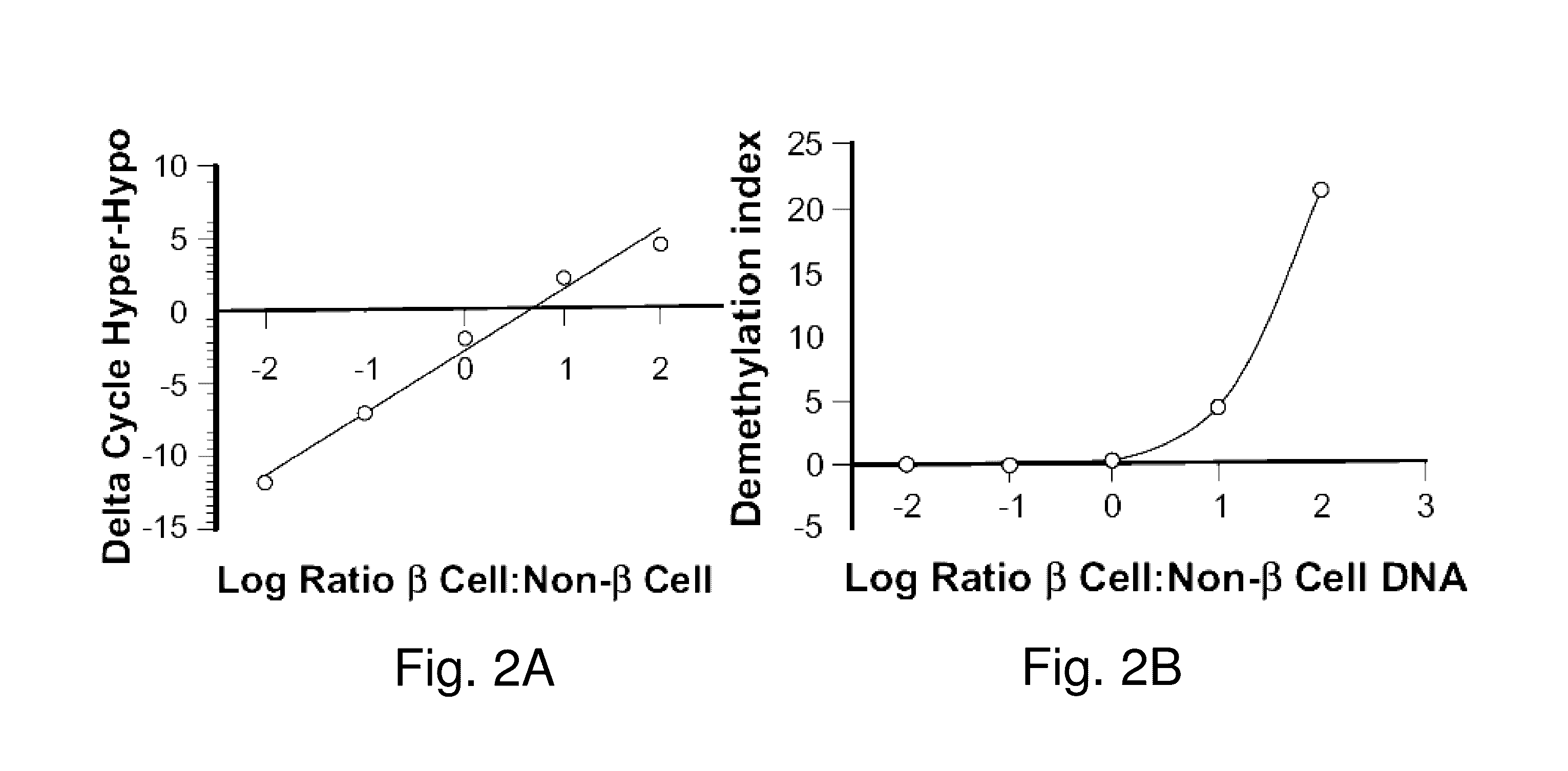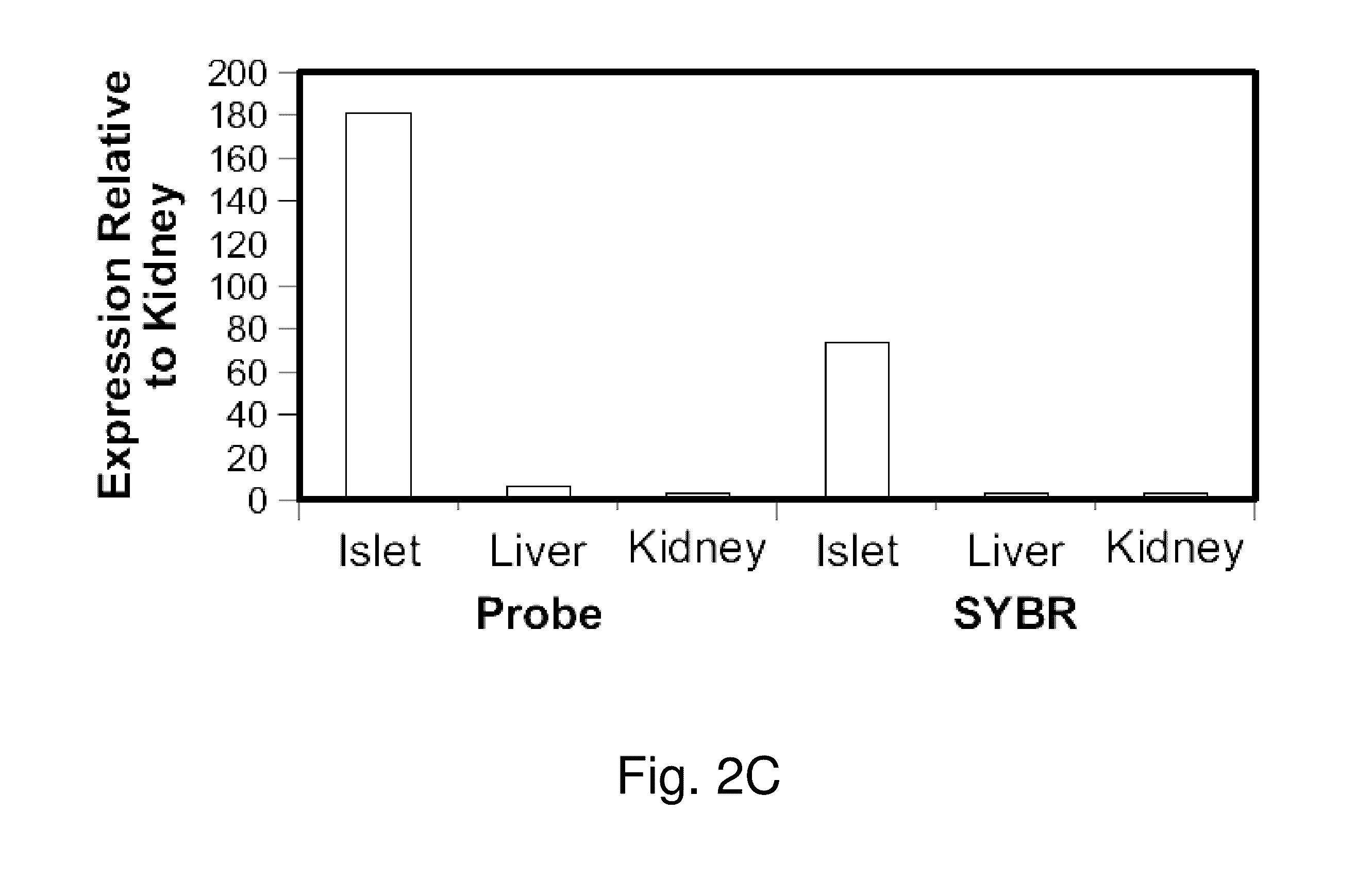Assay to measure the levels of circulating demethylated DNA
a technology of demethylated dna and assay, which is applied in the direction of microbiological testing/measurement, biochemistry apparatus and processes, etc., can solve problems affecting treatment, etc., and achieve the effect of low threshold and higher level
- Summary
- Abstract
- Description
- Claims
- Application Information
AI Technical Summary
Benefits of technology
Problems solved by technology
Method used
Image
Examples
example 1
β Cell Loss in Diabetes
[0206]A laboratory workflow diagram is shown in FIG. 7.
[0207]Bisulfite Treatment
[0208]DNA from serum samples was purified using the Qiagen QIAamp DNA Blood Kit following the manufacturer-recommended protocol. Synthetic unmethylated and methylated DNA was purchased from Zymo research. DNA was then subjected to bisulfite treatment and purified on a DNA binding column to remove excessive bisulfite reagent using the Zymo EZ DNA Methylation Kit.
[0209]First-Step PCR and Gel Extraction.
[0210]A methylation-independent reaction was carried out to increase the DNA template for PCR analysis.
[0211]For the reaction, bisulfite-treated DNA template was added to Zymo Taq Premix. The amplification proceeded for, e.g., 50 cycles. The PCR products were excised from a 3% agarose gel. Negative controls without DNA did not yield products in the first-step reaction.
[0212]PCR products obtained using methylation-independent primers were purified using a Qiagen PCR Purification Kit.
[02...
example 2
Oligodendrocyte Loss in Multiple Sclerosis
[0258]DNA methylation is a basic mechanism by which cells regulate gene expression, and while all cells share an identical DNA sequence, DNA methylation varies considerably according to cell function. Earlier studies by the inventor developed a minimally invasive method for detecting beta cell loss in the autoimmune disease, type 1 diabetes (Akirav et al. PNAS 2011). This assay detects differentially methylated DNA that is released from dying beta cells into the blood of patients with diabetes. Similarly, oligodendrocyte (ODC) DNA is released upon cell loss, and that this DNA can be detected in the blood of patients. The ability to detect ODC loss provides a biomarker for MS development, progression, and clinical response to therapy. FIGS. 25A and 25B show a schematic depiction of ODC cell loss in MS, with healthy tissue shown in FIG. 25A, and pathological tissue in FIG. 25B.
[0259]ODCs serve as a primary target of the immune system in the CN...
example 3
Murine MOG
[0297]Murine brain and spinal cord show differential methylation in the MOG gene, due to their O4+ cell population. FIGS. 26A-26C show Sanger sequencing results of bisulfite treated DNA from murine tissues. The arrows point toward CpG sites where cytosines (C) are preserved in methylated samples (Liver, Kidney), or converted to thymines (T) in samples containing demethylated CpGs, leading to a mixed population of C's and T's (Brain, Spinal Cord).
[0298]FIGS. 27A and 27B show separation of O4+ and O4− cells from digested murine brain tissue by magnetic beads. O4+ and O4− cells were separated from digested murine brain tissue by magnetic beads. FACS analysis showed >92.6±3.9% enrichment of O4+ cells among four independent preparations when compared to O4− fractions. FIG. 28 shows DNA from murine O4+ cells is differentially methylated in the MOG gene compared to DNA from O4− cells, the SW10 Schwann cell line, and liver. Sequence analysis was performed on first-step PCR product...
PUM
| Property | Measurement | Unit |
|---|---|---|
| Digital information | aaaaa | aaaaa |
| Digital information | aaaaa | aaaaa |
| Conformational barrier | aaaaa | aaaaa |
Abstract
Description
Claims
Application Information
 Login to View More
Login to View More - R&D
- Intellectual Property
- Life Sciences
- Materials
- Tech Scout
- Unparalleled Data Quality
- Higher Quality Content
- 60% Fewer Hallucinations
Browse by: Latest US Patents, China's latest patents, Technical Efficacy Thesaurus, Application Domain, Technology Topic, Popular Technical Reports.
© 2025 PatSnap. All rights reserved.Legal|Privacy policy|Modern Slavery Act Transparency Statement|Sitemap|About US| Contact US: help@patsnap.com



